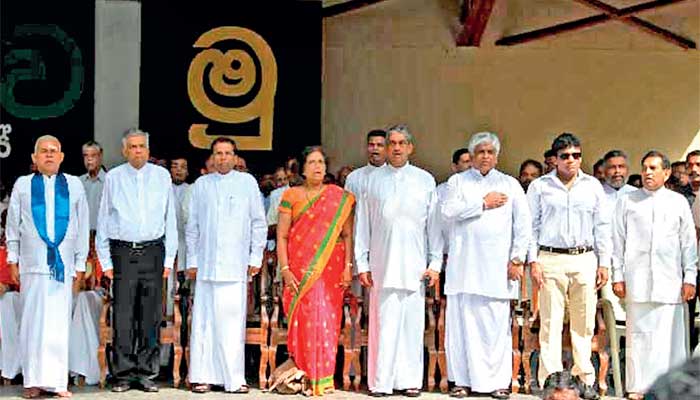Sri Lanka’s 2015 Yahapalana Government turned non-binding UNHRC Resolutions into National Law

Although UNHRC resolutions are non-binding, since 2009 the Council has effectively acted as a mouthpiece formalizing overseas LTTE lobbyist demands into intrusive resolutions. A Council that failed to act against LTTE over 30 years of terror has, since 2009, issued 11 resolutions against Sri Lanka—outside its original mandate and without UNGA or UNSC authorization—unfairly targeting the Sri Lankan Armed Forces. Procedural and funding irregularities, combined with political pressure, allowed these non-binding resolutions to be implemented as national law, creating a dangerous global precedent that should concern all UN Member States.
- Non-Binding Resolutions Pressured into National Law
UNHRC resolutions lack binding authority under international law.
- In 2015, the Sri Lankan government co-sponsored Resolution 30/1 and implemented 7 of its 9 intrusive demands domestically, including the Office on Missing Persons (OMP)and Reparations mechanism, which even benefited individuals claiming LTTE affiliation.
- Both OMP and the Reparations mechanism have failed to substantiate the claims on which they were established.
- The remaining 2 demands—a hybrid court with foreign judgesand a truth commission—are now being pressed on the current government via the latest UNHRC resolution.
- Foundation on Procedural Illegality
These resolutions relied on the Darusman Report (2011) and Petrie Report (2012), commissioned outside UNGA and UNSC authority and lacking legal standing. They paved way for an investigation on Sri Lanka (OISL) which too was beyond UNHRC’s mandate.
These reports were publicly leaked and formed the basis for 11 UNHRC resolutions, exceeding the Council’s mandate and echoing LTTE separatist demands which have been ignored or not caught by UN’s own internal oversight mechanisms which questioning the 5th Committees funding approvals.
- Legalization via Domestic Implementation
The 2015 government converted non-binding international resolutions into enforceable national law, contradicting Sri Lanka’s Constitution and weakening Sri Lanka’s sovereignty.
Sri Lanka’s experience illustrates how external pressure can transform “recommendations” into binding legal obligations, undermining state autonomy and the will of the People which is the basis of Sri Lanka’s Constitution.
- Consequences and Global Implications
- Sovereignty Erosion:Domestic enforcement of non-binding resolutions weakens national autonomy and denies People’s autonomy.
- Weaponization of Human Rights:UNHRC mechanisms, intended for accountability, are used as geopolitical tools; terrorist crimes are ignored while national forces are targeted.
- Precedent for Other States:If normalized, any sovereign nation could face similar external pressures.
Sri Lanka demonstrates how UNHRC illegalities—non-binding resolutions issued outside legal mandate—can be converted into enforceable law under domestic pressure. Other nations must recognize this precedent to safeguard sovereignty and prevent human rights mechanisms from being weaponized.
The 2015 Yahapalana Government and all coalition politicians involved must be held accountable for enabling foreign intrusion into Sri Lanka’s sovereignty and targeting the valiant forces that ended 30 years of terrorism. Efforts to close army camps, reduce armed forces, limit training, and strip privileges not only demoralize the military but weaken a critical pillar protecting Sri Lanka’s sovereignty. Politicians must foresee the repercussions of weakening the State—will they leave it vulnerable to LTTE or similar threats in the future?
The Yahapalana Government co-sponsored 30/1 UNHRC Resolution, the present Government which was a key ally in that Government should not commit the same mistake with 60/21 UNHRC Resolution agreeing to the final 2 demands to legalize illegal resolutions into domestic law (Truth Commission & Tribunal against our War Heroes)
Shenali D Waduge







